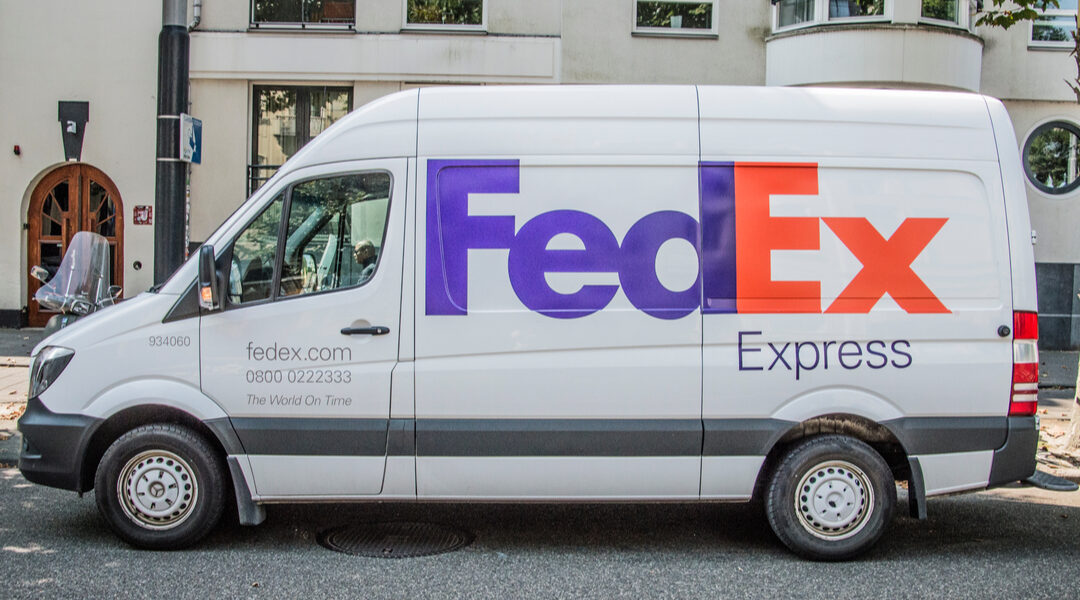
FedEx Express Delivers Value Through Automation
FedEx Express hardly needs an introduction, they’re a huge international logistics provider operating in pretty much every corner of the world. With an eye on digital transformation, though, they’ve used automation to improve how they help customers. To say it’s been a success would be an understatement.
Andrzej Srebro is the IT Manager for FedEx Express’ Robotic Process Automation Center of Excellence, and we recently sat down with him to talk about our work together. We wanted to shout about how well it’s gone, and so we’ve split this case study into 3 clear sections: the backstory, the approach, and the business outcomes for FedEx Express. Enjoy!
“When I started leading the RPA CoE at FedEx Express, I had to ask a lot of questions, more often than not, PAteam was the best source of information. That shows that they don’t just care about building the technology, they actually want to understand what is going on in the rest of our business. They align perfectly with us.”
Andrzej Srebro, IT Manager, Robotic Process Automation CoE at FedEx Express
The Backstory
Andrzej has worked with FedEx for nearly seven years, and although he’s been involved in different teams, he’s always been an IT manager, so it’s safe to say he knows what he’s doing. Just over two years ago, Andrzej was internally scouted by a previous boss of his to head up a CoE that FedEx wanted to set up, to focus on RPA.
Before this, RPA had been split between several different teams, and his boss felt that a centralized point of responsibility and knowledge would be the best way to help automation rollout in the business. PAteam had been involved with FedEx for some time before Andrzej started leading the CoE, and it was clear that when Martijn, our MD, met with him that there would be a real acceleration in what we were working on together.
Going through modernization in a big company is a challenge, and although FedEx’s response to the pandemic had greatly accelerated the process, there were still key areas that they felt a real impact could be made – offering the most significant benefits. This was particularly within the customer experience space, where a lot of manual work slowed down service representatives and delayed query resolutions for customers.
Our Approach
There were some areas that we were able to work with Andrzej and his team on that would turn out to have a significant impact on the FedEx Express customer experience. RPA is often lauded as a great piece of technology within the accounting space. But, similarly, any area of a business that has basic, repetitive processes can benefit from the technology.
Dramatically modernizing their web interface, FedEx went from a classic style contact page, all the way to a web form that when submitted is processed in full by a bot – rather than a person. The previous setup would be an entirely manual process, with a customer representative processing the contact form, emailing a response, setting up a claim, then emailing the details of that claim at a later date. Now, the robots we helped build process everything in full immediately, delivering a claim reference number to the customer within 30 seconds.
Beyond the pure RPA working behind the scenes of the customer contact web form, we also helped build a piece of attended automation in the form of a digital assistant. This helps agents execute certain tasks. For example, if a customer calls the center for a query on a package that has data in a number of FedEx’s systems, the digital assistant helps collate and display all that information for the customer agent.
Much of the initial trials of these technologies were started in the UK, and this was in part due to having to tackle the country-specific issues following Brexit that saw a huge surge in customer contact. Once it was clear it worked in the UK, it was rolled out throughout Europe.
It’s fair to say we have a very close working relationship with FedEx, and Andrzej was so confident in the work we do and our expertise that he began to treat us like a true extension of his own team. It’s a part of this project we’re particularly proud of. We’re conscious of taking the time to really understand not just the tech but the business itself, and that shines through in the way we’re treated by Andrzej and his team.
Their Business Outcomes
Some of the automation we helped to put in place very directly impacted the staff at FedEx because they were using the digital assistant. This is currently being trialed in a couple of customer centers, slowly growing its scope. But for the unattended automation, this indirectly impacted the work of thousands of agents at FedEx by taking away repetitive tasks that stop them from adding value.
We’ve even been able to define the impact into three separate categories:
- Rather than having to let any staff go as a result of bots taking on their tasks, they were instead relocated to different tasks and teams so they could really utilize their skills and experience for their own satisfaction and the satisfaction of FedEx’s customers.
- By executing tasks quicker and more effectively FedEx is able to avoid customers opening certain claims to recoup costs. Also, because customers can book almost everything via the web service, it’s improved the inflow of cash into the business. RPA helped save money and increase revenue.
- Something difficult to quantify but extremely important to FedEx is the way that customers view their interactions with them. After the RPA efforts, they measured this through surveys and got a lot of good feedback from customers. It’s a big improvement in the brand and the level of service that FedEx Express offers.
We know, just like FedEx, that customers want to get things moving, they don’t want to have to wait for anything. They expect this level of service because it’s present in other parts of their lives and through other companies they work with. It’s a pleasure to help FedEx Express push the boundaries of what they’re doing, and really give their customers what they want and need.
Our work so far has been a real success, and because of that there’s an increased interest in RPA from other departments outside of customer experience. That’s the next step for Andrzej and the team – take their success with automation, and build on it. Whether that’s by rebuilding what’s already been made or making something new, we’ll be on hand to help.
“As a company, we’re focused on digital transformation and bringing further efficiencies to the business. Automation ticks both of these boxes. There is a whole world of opportunity for automation and optimization, and it’s something we’re excited to continue pursuing with PAteam.”
Andrzej Srebro, IT Manager, Robotic Process Automation CoE at FedEx Express
Want to be among great businesses like FedEx Express? Reach out to PAteam today









